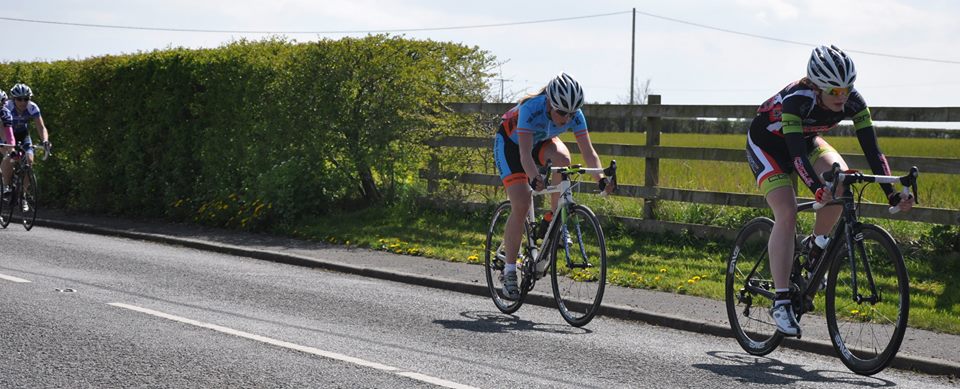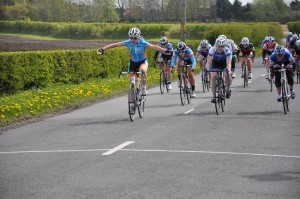One of the big killers of women’s road racing historically has been a perceived lack of engagement from the women’s cycling community by the cycling world as a whole. Women can be an organiser’s nightmare – unlike the male racing community where races can be oversubscribed within days, especially where 2/3/4 or 3/4 men’s races are concerned, women’s fields seem to take an age to fill and it can be incredibly frustrating as an organiser, so we thought it would be helpful to produce a guide to assist in the promotion of women’s racing.
Don’t be fooled by statistics
The key point here is that there are nowhere near the numbers of women racing as most people think. In fact, latest figures suggest that there are around 1,500 licence holders nationally. Yes, the numbers may have increased by 53% over the last two years, but we’re still nowhere near capacity. This brings me nicely onto the next point:
Riders will travel for the right race opportunity
As the opportunities are still relatively limited for women racing, riders will often travel outside of their region for the right event. This means that you need to check the Events Calendar on the British Cycling website to ensure that there are no potential clashes on the date you are looking for – if you are planning your event for next season, most races tend to stay on the same date each year – so use the previous year’s calendar if nothing else. Other clashes to avoid include any Women’s Team Series event, especially if you are planning on organising a race down South, and National Series events, unless your target is a W3/W4 field. There is also a list of women’s event in the Racing Chance Women’s Racing Forum group on Facebook, as a backstop.
Get your classification right
If you want to organise an event, you have to ring up British Cycling and request access to their Event Organiser Dashboard. It’s really straightforward to set a race up and there are loads of FAQs for organisers on the BC website. The main thing to make sure is that you get the classification right – there is an option for “Women Only” – this is the classification that women who want to race will search for when looking for events. Trust us, there are organisers who have not clicked that option and have then queried why no women entered their event.
Don’t overprice the event – big prizes are not the answer
There is nothing that women riders hate more than an event that costs a fortune (this includes closed circuit races that are the same price as the elite men’s event when it isn’t the same distance). With road racing, the costs are much higher due to marshalling requirements, mileage costs for officials and higher first aid costs, but budget accordingly and work out what the best price is for your entry fee. Most racing cyclists aren’t loaded cash wise, so if you pick a price point which is over £25, it is likely that they will look elsewhere for a cheaper alternative. And don’t try the “we have a great prize list though” argument – if you are offering a large amount for the winner/top 10, that has no effect on the majority of the riders entering your race as there are only 10 riders who will profit. If you’re lucky enough to have sponsorship in monetary terms, why not use some of that cash to reduce the entry fee to something more reasonable? Your field size will more than likely benefit from it.
Run it alongside a men’s event
Most women’s races will not feature full fields – it’s a fact of life, so manage your expectations accordingly. However, one of the best things to do if you want to promote a women’s event is to run it at the same time as a men’s event. In order to do this, you will need to find a circuit that is long enough (we usually say around 8 miles minimum) and that you have permission to do that (check with your local Regional Events Officer for confirmation) but in our experience, this is the best way to start off and it ensures that your event for the women will break even, as the infrastructure will be in place already for the men’s event – the only additional costs will be for the officials who are overseeing the women’s event.
Enable “View Entrants”
Most women look at who else has entered the race before deciding whether to enter or not. Take up for most races seems to be better when riders can see their competitors and how many entrants there are.
Provide as much information as possible
The more information you can provide the better. Lovelo Cinelli RT’s race promotion was extremely good – it included a link on Strava to the circuit, a YouTube clip of the circuit and an informative race pack early on – they were fully booked within days.
Use social media to promote your event
Twitter and Facebook groups are the obvious choice – but make sure you include the link to the event on the British Cycling calendar – this is often overlooked, especially if your event has its own website. Choose a good hashtag too – it helps to promote a vibe around your event. At the same time, it’s also useful to note that there is no need to bombard your potential riders with tweets and Facebook mentions – if you turn into an obsessive, people just switch off and totally disengage – you won’t get any riders that way.
Remain positive at all times
Don’t fall into the trap over openly criticising women for not entering your event early – it’s just not appropriate. There’s no need to coerce, troll or bully women into entering your event – if it looks like a good event and you promote it in the right way, you are highly likely to get entries, just don’t expect a full field as it’s unlikely to happen.
If you decide to promote a women’s race, thank you very much. Organising events is a thankless task and it can seem incredibly overwhelming if you haven’t done it before, but without event organisers there would be no sport, and cycling would be the much worse off as a result.


